#national art standards
Explore tagged Tumblr posts
Note
Yuuji: Bye, im going to the fire nation!
Sukuna: Not dressed like you aren't.
Proceeds to give Yuuji a boob window in his clothes
ngl anon i took this bit way too seriously n got carried away thinking abt what yuuji's fire nation alternate fit would look like ,, then after figuring it out I thought well now I /have/ to draw air as well ....

jjk atla!au with @philosophiums
#my art#jujutsu kaisen#jjk#itadori yuuji#yuuji#fanart#jjk fanart#jjk atla!au#atla!au: art#atla!au: design#lmhs#answered#anonymous#my sandbox my design i make the rules yuuji hates th air acolyte clothes. i decided bc i didnt like drawing him in them GHSDFH#its in character fr him !! he likes clothing he cn roll n brawl n thrash around in#theres too many layers n folds with those robes th poor boy is gna get tangled :(((((#hes right at home in th fire nation getup tho :D !!#still probably not *exactly* to sukuna's standards but hopefully he appreciates th deep v#its more yuuji coded i think#tho tbh ?? if u take off sukuna's..what even is that a chest piece? pauldrons?? either way if u take those off its just a low cut robe also#sukuna voice u know brat maybe we're not so different u and i#side note i 100% stand by our decision 2 make yuuji a born earthbender but *clenches fist* yuuji in red.............#i love u i miss u#tho in green he gives sakuramochi and i think thats beautiful in its own way
560 notes
·
View notes
Text



its been literally like. six months since i started this comic about the bft showing up in drag to support feli at his first pride dressing fem (nonbinary feliciano my love) but im never gonna finish it so. take the few panels of roma being aggressively bisexual that still make me laugh.
#you can tell how old this is based on how i drew roma's hair bc i dont do it like this anymore#i generally view most heta nations as bisexual (with only a few exceptions) but romano is one of the few i will not accept as anything but#that man is so fucking bisexual idc#hetalia world stars#spamano#technically. lmao#my art#once again: tagging lightly bc the quality is not up to my standards#just enough to avoid if u dont like the ship lol
56 notes
·
View notes
Text

future shiv
#this is not as old as i wanted to draw her but this is at least plausible#like maybe a couple years into the future fic just not at the very end#idk. this is still an extremely important shiv to me#this is a shiv that could both willingly have hibernian and also fucking despise hibernian even when hes literally a baby#like thats a baby why are you mad at a baby. come on#she is perfect#god i love shiv i love her so so much#look at her Please#Please lookj at shiv please#succession#art#fanart#succession fanart#shiv roy#siobhan roy#the nation#she very much thinks the absurd fashion standards for the megarich which have kind of atrophied into red white and blue bullshit#make her look like “a tired hooker” but she doesnt do her own makeup anyways she has a female servant do it#this is a shiv that hibernian could look at and immediately start trembling#SHIV
360 notes
·
View notes
Text
#phoenix suns#suns#suns nation#suns basketball#kevin durant#kd 35#nba saturday#nba art#fine art#Sale: up to 60% off newly added lines. Shop now#Subscribe to our emails to hear about our exclusive launches and Sales#Enjoy Free Standard Delivery on orders over $200#Search#Up to 60% off#What's New#What To Wear#Designers#Clothing#Shoes#Bags#Accessories#Watches#Sport#Home & Gifts#People & Planet#A#B#C#D#E
4 notes
·
View notes
Text
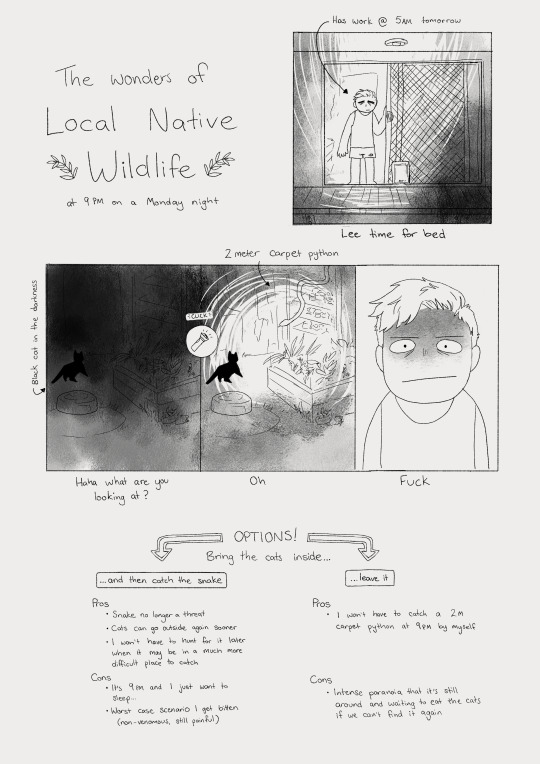
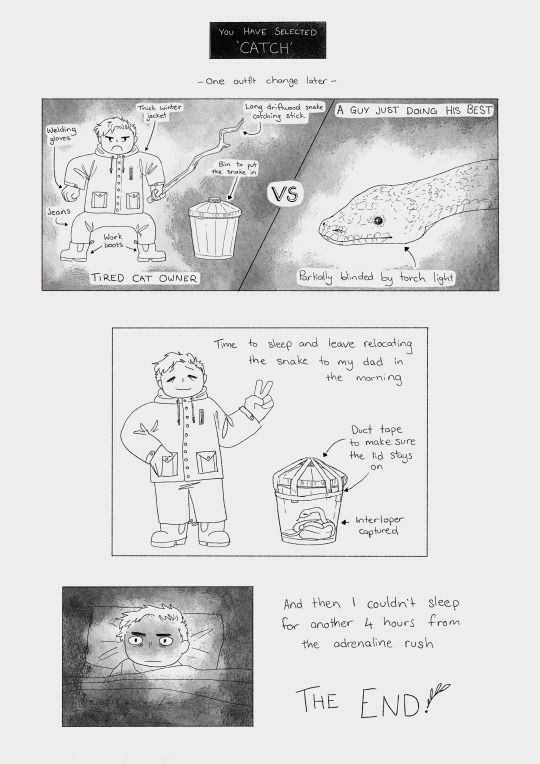
Decided to practice a simpler comic style with something that happened last week
Remember: don't mess with snakes if you don't know what kind they are, and even then you should only interact with them if you have experience and are unable to get professional assistance!
#my art#original comic#i do actually have experience catching snakes because this exact thing has happened a dozen times#it's just that I usually don't have to do it alone#venomous snakes should always be left alone unless your stupid cat has brought small ones into the house and you have to catch them#because he put them in front of your bedroom door#sometimes I forget other people don't live near national park and constantly dealing with local wildlife is not standard#anyway: keep your cats indoors bc all this shit has happened within a fenced in 10 square meter ish yard so they would absolutely devastate#the local wildlife population if they weren't kept in a restricted area
7 notes
·
View notes
Text
I take back... SOME of my negativity about fe:engage. Now that I'm out of prolog hell I have decided the fun eclipses the annoyances. For now.
#speculation nation#engage spoilers/#i still think the ring emblem thing is cheap#... but it also brought me a lot of joy to see and hear Celica again. same voice actress 😭 even if her sprite looks different (worse)#the real separating moment tho was when i went to the side summoning thing and mae showed up. i gasped a little ngl.#apparently i couldnt give less of a shit about marth or sigurd. but celica and the Valentia crew... 😭😭😭😭😭😭#i mean itd probably just be better to play echoes instead of engage if what is bringing me the most joy in this game is Valentia Crew#which. god i wish echoes was longer than it is. it's Easily my favorite fire emblem game#in characters. story. art. music. tactics (LOVE the battle maps)#there is not a single thing i dislike about echoes. aside from the length i guess. but really i just obsessively play it anytime i play#so it feels so short but i do dump a good 50 hours per game. so not Long but not short#ive replayed it like 3 times at least. and god i miss it. i always wanna play it more.#maybe my next game i should play on hard. i enjoy the challenge more lol#uhm. well. ok so engage is still incredibly lackluster in comparison to echoes. but really that's an impossible standard for it to meet. so#other thoughts: i HATE HATE HATE this princess' dress SO fucking much. i though alfred's fucking panteloons were stupid#but her fucking bulb dress is so much worse. and she's not even a healer!!!!! another squishy mage but with a sword too >:(#she came with celica which made it obvious she's meant as a celica copy. but at least celica can heal >:(#i wonder if alm is somewhere. probably in the land of strength??? if i had to guess at least.#ok but the princess' retainers... i actually kinda like them... their voices are actually decent! and that pegasus rider is... 😳#i desperately need another monk. current girl is decently useful as a healer but she is weak as FUCK#the punchy stuff seems cool but i never see it cause i gotta keep her off the front lines bc she's SQUISHY#im warming up to the twins. still hate their voices & i hate when theyre fanboying.#but removed from the protag theyre kind of sweet. plus passably useful in battle.#god i need another healer tho lmfao. pls @ the game give me another healer soon...
1 note
·
View note
Photo
#this is a perspective I’ve only seen from people who truly think broadly and sympathetically about life#like he’s literally right I’m sorry and people who aren’t white or cis or straight learn so so SO early that your existence is political#not inherently but because white cishet men have crafted society in a way it’s impossible for it not to be#and ignoring that isn’t going to make you ascend above it god I’m so tired of having to explain that to people#I’m tired of people’s experiences in both places of privilege and place of oppression being used to scapegoat what we all can see#like look at his example!#‘going out for a dance on a Saturday night’ means something different if you’re poor if you’re gay if you’re a racial minority#’walking into a shop’ who owns it how often do you go is it a big box store or a small owned business is it walkable#there’s pOLitiCs in all of that! in ever aspect of your life!#ESPECIALLY if you take your life experiences and turn them into art of any form (via @twentyfour-mp3)
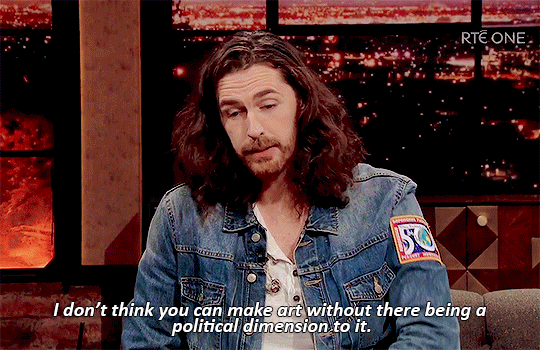

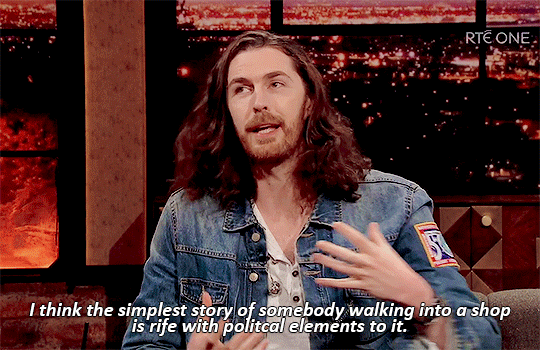
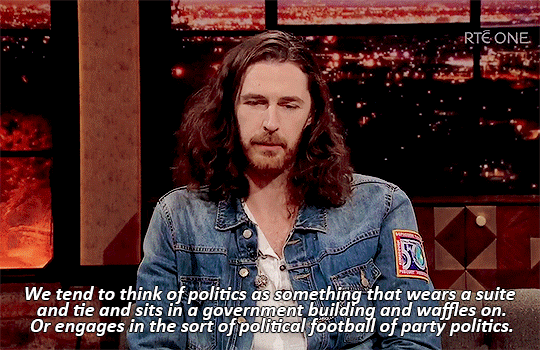
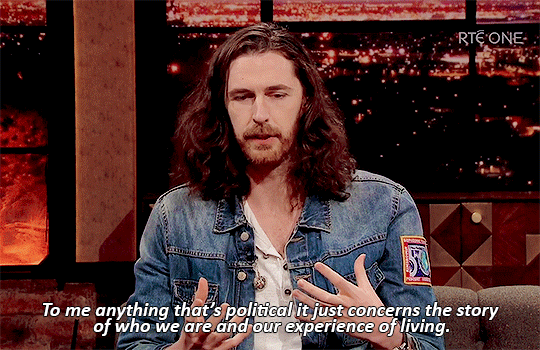
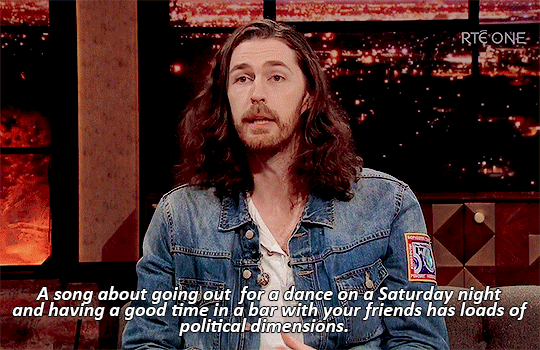


#hey thanks for these tags#it's why this particular section matters so much to me#also him being Irish is super important here#there's a tendency for colonized nations to be highly aware of the role of art in politics#in no small part because they have experienced first hand how said art was weilded against them#sometimes innocently and sometimes not#with this post exploding past the Hozier fandom#I'm seeing a lot of comments that are borderline vitriolic against this idea#and against my man#all I'll say about it is that our need to continously assert that art is somehow transcendant#and is just for fun is quite transparent#also there is a comment that art is commentary on society and culture but that's not politics#LOL my guy my lady my man my dude#those are topics that are almost entirely political#he literally addresses that here#if it concerns the experience of people then it's political#because we live within a system that enesures that#also an aside; I think this perspective is exactly what makes hozier's love songs have that extra layer to them#that makes them feel different and standout#there's this overlay of awareness of how this functions within a specific set of pre-existing standards for love and its shape#an understanding of power dynamics between genders how they transpire to love#how love is seen from a very cis-het perspective#it's why i always feel uncomfortable separating hozier discography into the political on one side and the yearning love songs on the other#these two are one the same and incredibly linked in my understanding of his work#anyway thanks y'all for engaging with this#but keep the slander to yourself pls#no need ot get nasty to the man or to each other
108K notes
·
View notes
Video
Comparison of Mechanisms of Carcinogenesis by Radiation and Chemical Agents by National Library of Medicine Via Flickr: Contributor(s): National Institutes of Health (U.S.)., Medical Arts and Photography Branch. United States., National Bureau of Standards. National Cancer Institute (U.S.) Publication: [Bethesda, Md. : Medical Arts and Photography Branch, National Institutes of Health, 1983] Language(s): English Format: Still image Subject(s): Carcinogens -- chemistry Hazardous Substances -- adverse effects, Radiation Genre(s): Posters, Congresses Abstract: Black poster with white lettering. Visual image is a crab formed by red and yellow objects placed together to resemble cancer and normal cells. The details of the symposium are also given. Extent: 1 photomechanical print (poster) : 56 x 46 cm. Technique: color NLM Unique ID: 101456195 NLM Image ID: C02961 Permanent Link: resource.nlm.nih.gov/101456195
#Posters#Congresses#Medical Arts and Photography Branch. United States#Photomechanical Print#cancer cell#normal cell#Carcinogens#chemistry Hazardous Substances#adverse effects#Radiation#National Bureau of Standards#National Cancer Institute#Still Image#Public Domain#Free Images#Prints and Photographs#National Library of Medicine#NLM#IHM#National Institutes of Health#NIH#Archives of Medicine#NLM Digital Collection#flickr
0 notes
Text
Miss Universe National Costume 2024, Part 2!
Splitting this off into a new post so I'm not clogging up everyone's dash quite as much.

Miss Malta is some sort of environmental protection Sailor Scout. I think the giant bow would look better on the back of the skirt but otherwise this is solid.

It has just come to my attention that I skipped over Miss Albania and several other A/B countries, back at the beginning. I sincerely apologize! She went to all this trouble putting together a Fifth Element cruise ship passenger costume, and I nearly missed it.

Miss Armenia, in what even I have to admit would be a legit Princess Leia fit.

Miss Bahrain, adding some green to her Gold And Vaguely Historical look, along with what is either a comically large prop chalice or an upside-down lamp.

Miss Bangladesh appears to believe that adding two plush tigers from the toy store around the corner from the pageant venue will conceal the fact that she is just wearing a tiger-print evening dress. Miss Bangladesh is incorrect.

Miss Belgium. Girl. No.

Miss Belize let the seventh-grade art class do her whole costume, which was a bold choice.
Okay, I think that's everyone I missed! Back to alphabetical order. And I should have to rely less on shitty screenshots, now. Some countries were benefiting from the low resolution, tbh.

Kind of feel like Miss Maldives had a luggage mishap and she's just wearing the outfit she packed for a slightly dressy dinner.

Miss Martinique's costume would honestly have looked better in the shitty screencap version. The construction is... bad. It's bad.

Feel like we're in a little bit of slump here. Miss Mauritius did not stick enough butterfly appliqués to her gown to conceal that it is, in fact, just a regular evening gown.

Slump officially over! We are so back. Everyone say thank you, Miss Mexico.

I would like this better if it had just committed to the giant skirt and not felt the need to make it a Sexy Miniskirt look. Sorry, Miss Moldova.

Miss Mongolia wanted to stand out from all the other gold armor on stage, so she decided to a) wear cooler armor and b) bring a bow and arrow instead of a sword. Great work, Miss Mongolia.

Starting to feel like I'm picking on the smaller countries that probably don't have a huge pageant culture or the budget for really elaborate costumes, but on the other hand Miss Montenegro's costume is super low-effort AND the fabrics look cheap, so what am I supposed to do?

Okay, this looks like a pretty standard Miss Universe Sexy Bird, yes? Well, THIS is how Miss Myanmar entered the stage:


She had to fight her way out of that thing! God only knows what the visibility was like in there.

I think the hat is doing most of the heavy lifting to keep Miss Namibia's costume from being Just An Evening Dress, sadly.

Oh, yikes. It's more obvious in motion but Miss Nepal's bodice looks like it's made of craft foam and it fits real weird. The rest of it looks a little like she got together with Miss Cyprus and a pile of tablecloths for a sewing bee last night, I'm sorry to say.

Miss Netherlands has chosen a Tribute to Delft. I think if I were in charge of this costume I would do a much fuller skirt that falls from the waist, instead of the weird trumpet-skirt-with-hoop we've got here. And, obviously, I would make the windmill on the bodice actually spin.

It looks like she's having some issues keeping the wings and peplum in place, but I really like Miss New Zealand's costume from a design perspective. It at least slightly resembles the bird it's supposed to be (New Zealand fantail) and I think the feather pattern is meant to be in a Maori art style.

Miss Nicaragua is a Sexy Cathedral, which I think might be a Miss Universe first and is definitely a big old step closer to drag.
Okay, pausing here to get the next batch ready.
2K notes
·
View notes
Text
biblically accurate, semi-realistic candace or kandake, who was a nubian queen
image renders:






Incoming yap about the current genshin problem:
As a Chinese person swarmed by western media, Liyue means so, so much to me. Seeing the culture that I've been taught to be ashamed of all my life being represented so accurately and positively makes me incredibly happy. It was the first time I saw the famous landscapes that I've visited in person and recreated a fantasy game. Seeing characters wear clothes with similar designs to what I’ve worn and eating similar foods to what I’ve eaten, is indescribable. The euphoria I felt when I first climbed atop of Qingyun Peak and heard the music is something I wish I could experience again.
That being said, Sumeru was a mess, and Natlan is just depressing. What I would give to have people from SEA/SWANA, Latin America, Africa, and Indigenous groups etc. to feel the same way I did when strolling through Liyue.
HYV’s colorism isn’t just stifling their character designs; by whitewashing real-life people, real cultures and even their deities, they are inadvertently whitewashing history. They are taking from actual ethnic groups: learning their history and struggles, then retelling these narratives after replacing their people with bleached protagonists in orientalist clothing.
All this because of what? Out of touch beauty standards? The possibility of lower sales? Dehya is extremely loved in China and her fans donated thousands to a children’s charity in her name. Other Chinese companies like Lilith Games and Bluepoch don’t have this problem. Dislyte is able to consistently pump out gorgeous character designs with varying skin tones and Reverse:1999 makes accurate designs and does in-depth research into the cultures of their characters.
It’s a basic lack of respect.
I've heard that Iranian players were extremely happy and touched by their representation, and that's amazing. And most European, Chinese, and Japanese players are fine with theirs. I just wish this extended to the representation of people with skin tones that are darker.
HYV has shown that they are capable of making characters with darker skin tones and interesting designs, but they will only do that for npcs and enemies. Orientalism, culture mash-ups and inaccuracies across regions is unfortunately common in the game, but the problem with the unchanging pale color of playable characters reflects an obvious and sinister bigotry. I do personally believe that a lot of this has to do with the meddling of higher-ups; many playable characters look like they’ve been white-washed at the end of the process, and just from an art/design standpoint, they fit darker skin-tones much, much better.
It is impossible for Genshin to be a fully “fictional fantasy game” because they chose to bear the responsibility of incorporating real life cultures into their world-building. The criticisms about Sumeru and Natlan are what they brought upon themselves. If you don’t want to represent properly, don’t do it at all. You cannot take everything from a culture and leave their people out of it. They deserve the same respect and research as the region representing your own nation.
For the people who have seen themselves represented in media over and over again, or for those who do not care about being represented at all: even if YOU don't care, others do, and they have a damn good reason for it. This is a big deal, it isn’t too much to ask for, and I will be blocking racists. Peace.
#art#fanart#genshinimpact#genshinimpactfanart#digital art#lilliangst art#natlan#candace#3d#3d modeling#3d sculpting#3d art#3d model#blender sculpt#blender#blender 3d#nomad#nomad sculpt#candace genshin#kandake#digital sculpture#candace fanart#my art#sumeru
2K notes
·
View notes
Text
Why Kids Aren't Falling in Love With Reading - It's Not Just Screens
A shrinking number of kids are reading widely and voraciously for fun.
The ubiquity and allure of screens surely play a large part in this—most American children have smartphones by the age of 11—as does learning loss during the pandemic. But this isn’t the whole story. A survey just before the pandemic by the National Assessment of Educational Progress showed that the percentages of 9- and 13-year-olds who said they read daily for fun had dropped by double digits since 1984. I recently spoke with educators and librarians about this trend, and they gave many explanations, but one of the most compelling—and depressing—is rooted in how our education system teaches kids to relate to books.
What I remember most about reading in childhood was falling in love with characters and stories; I adored Judy Blume’s Margaret and Beverly Cleary’s Ralph S. Mouse. In New York, where I was in public elementary school in the early ’80s, we did have state assessments that tested reading level and comprehension, but the focus was on reading as many books as possible and engaging emotionally with them as a way to develop the requisite skills. Now the focus on reading analytically seems to be squashing that organic enjoyment. Critical reading is an important skill, especially for a generation bombarded with information, much of it unreliable or deceptive. But this hyperfocus on analysis comes at a steep price: The love of books and storytelling is being lost.
This disregard for story starts as early as elementary school. Take this requirement from the third-grade English-language-arts Common Core standard, used widely across the U.S.: “Determine the meaning of words and phrases as they are used in a text, distinguishing literal from nonliteral language.” There is a fun, easy way to introduce this concept: reading Peggy Parish’s classic, Amelia Bedelia, in which the eponymous maid follows commands such as “Draw the drapes when the sun comes in” by drawing a picture of the curtains. But here’s how one educator experienced in writing Common Core–aligned curricula proposes this be taught: First, teachers introduce the concepts of nonliteral and figurative language. Then, kids read a single paragraph from Amelia Bedelia and answer written questions.
For anyone who knows children, this is the opposite of engaging: The best way to present an abstract idea to kids is by hooking them on a story. “Nonliteral language” becomes a whole lot more interesting and comprehensible, especially to an 8-year-old, when they’ve gotten to laugh at Amelia’s antics first. The process of meeting a character and following them through a series of conflicts is the fun part of reading. Jumping into a paragraph in the middle of a book is about as appealing for most kids as cleaning their room.
But as several educators explained to me, the advent of accountability laws and policies, starting with No Child Left Behind in 2001, and accompanying high-stakes assessments based on standards, be they Common Core or similar state alternatives, has put enormous pressure on instructors to teach to these tests at the expense of best practices. Jennifer LaGarde, who has more than 20 years of experience as a public-school teacher and librarian, described how one such practice—the class read-aloud—invariably resulted in kids asking her for comparable titles. But read-alouds are now imperiled by the need to make sure that kids have mastered all the standards that await them in evaluation, an even more daunting task since the start of the pandemic. “There’s a whole generation of kids who associate reading with assessment now,” LaGarde said.
By middle school, not only is there even less time for activities such as class read-alouds, but instruction also continues to center heavily on passage analysis, said LaGarde, who taught that age group. A friend recently told me that her child’s middle-school teacher had introduced To Kill a Mockingbird to the class, explaining that they would read it over a number of months—and might not have time to finish it. “How can they not get to the end of To Kill a Mockingbird?” she wondered. I’m right there with her. You can’t teach kids to love reading if you don’t even prioritize making it to a book’s end. The reward comes from the emotional payoff of the story’s climax; kids miss out on this essential feeling if they don’t reach Atticus Finch’s powerful defense of Tom Robinson in the courtroom or never get to solve the mystery of Boo Radley.
... Young people should experience the intrinsic pleasure of taking a narrative journey, making an emotional connection with a character (including ones different from themselves), and wondering what will happen next—then finding out. This is the spell that reading casts. And, like with any magician’s trick, picking a story apart and learning how it’s done before you have experienced its wonder risks destroying the magic.
-- article by katherine marsh, the atlantic (12 foot link, no paywall)
16K notes
·
View notes
Note
The lore for National Bubble Superman (全民泡泡超人), the Chinese BNB clone, is really fun to read, especially if it involves Blue (the Dao clone), my favorite character.
National Bubble Superman? The only lore (…or anything in general) I know from the game is that Blue and Ruby (the Bazzi knockoff) were apparently made in a lab and that’s about it. I tried checking if there was a Baike page for the game so I could know more about the story but I couldn’t find one.
#tbh none of the designs in National Bubble Superman really appeal to me besides the Diz clone#and the art style gives off standard mobile game vibes#but the BGM for the title screen is good I admit#mail
0 notes
Text
I feel like I've had the same experience several times now: someone does a new translation of a non-English literary classic, and all the critics praise it to the moon, so I go and try to read it, and it's turns out it's just . . . bad? Like, really bad? And weirdly bad?
A while back, I wrote about the case of Pevear and Volokhonsky. Here's another example, which I encountered while doing background research for my novel Almost Nowhere.
----
One of my novel's major characters is a literary translator, famous for his rendition of the Persian epic poem Shahnameh ("Book of Kings").
To help me write this character, I tried to read the Shahnameh myself. I started out – where else? – with the translation that seemed to be the gold standard, and which was certainly the most critically lauded.
Namely, the 2006 translation by Dick Davis, in prose with occasional shifts into verse.
Here's how the Shahnameh begins, in Davis' translation:
What does the Persian poet say about the first man to seek the crown of world sovereignty? No one has any knowledge of those first days, unless he has heard tales passed down from father to son. This is what those tales tell: The first man to be king, and to establish the ceremonies associated with the crown and throne, was Kayumars. When he became lord of the world, he lived first in the mountains, where he established his throne, and he and his people dressed in leopard skins. It was he who first taught men about the preparation of food and clothing, which were new in the world at that time. Seated on his throne, as splendid as the sun, he reigned for thirty years. He was like a tall cypress tree topped by the full moon, and the royal farr shone from him. All the animals of the world, wild and tame alike, reverently paid homage to him, bowing down before his throne, and their obedience increased his glory and good fortune.
And here is the same opening, in the 1905 translation by Arthur and Edmond Warner (which I only discovered much later in the process of writing Almost Nowhere):
What saith the rustic bard? Who first designed To gain the crown of power among mankind? Who placed the diadem upon his brow? The record of those days hath perished now Unless one, having borne in memory Tales told by sire to son, declare to thee Who was the first to use the royal style And stood the head of all the mighty file. He who compiled the ancient legendary, And tales of paladins, saith Gaiúmart Invented crown and throne, and was a Sháh. This order, Grace, and lustre came to earth When Sol was dominant in Aries And shone so brightly that the world grew young. Its lord was Gaiúmart, who dwelt at first Upon a mountain; thence his throne and fortune Rose. He and all his troop wore leopard-skins, And under him the arts of life began, For food and dress were in their infancy. He reigned o'er all the earth for thirty years, In goodness like a sun upon the throne, And as a full moon o'er a lofty cypress So shone he from the seat of king of kings. The cattle and the divers beasts of prey Grew tame before him; men stood not erect Before his throne but bent, as though in prayer, Awed by the splendour of his high estate, And thence received their Faith.
Now, I can't speak at all about the source text. I have no idea how faithful or unfaithful these two translations are, and in what ways, in which places.
Still, though. I mean like, come on.
This is an epic poem about ancient kings and larger-than-life heroes.
This is a national epic, half myth and half history, narrating the proud folkloric lineage claimed by a real-world empire.
There is a way that such things are supposed to sound, in English. And it sure as hell isn't this:
What does the Persian poet say about the first man to seek the crown of world sovereignty?
Excuse me? That's your opening line? I thought I was reading a poem, here, not taking a fucking AP World Literature exam!
----
Postscript
Some of the critical praise for the Davis translation, quoted on the back cover of my copy (emphasis mine):
"A poet himself, Davis brings to his translation a nuanced awareness of Ferdowsi's subtle rhythms and cadences. His "Shahnameh" is rendered in an exquisite blend of poetry and prose, with none of the antiquated flourishes that so often mar translations of epic poetry." (Reza Aslan, The New York Times Book Review) "Thanks to Davis's magnificent translation, Ferdowsi and the Shahnameh live again in English.” (Michael Dirda, Washington Post) "A magnificent accomplishment . . . [Davis’s translation] is not only the fullest representation of Ferdowsi’s masterpiece in English but the best." (The New York Sun)
#almost nowhere#fyi: the warner and warner translation is out of print now but archive.org has the whole 9-volume thing#hmm i wonder which version of the cypress/moon image is more faithful...#(in davis he's the tree. in warner&warner he's the moon. these are not the same metaphor!)
478 notes
·
View notes
Text

September 19, 2023, marks one of the darkest chapters in Armenia's modern history.
As a result of another large-scale military aggression by azerbaijan, the entire population of Artsakh, native to the land for over 3000 years, was subjected to ethnic cleansing and was forced to leave their homeland. This operation followed a nearly 9-month blockade of the Lachin Corridor, the only land route connecting Artsakh to Armenia. The blockade created a severe humanitarian crisis, cutting off food, medical supplies, and other necessities for the people of Artsakh. Even after nine months of illegal blockade, the armed forces of Artsakh fought with exceptional heroism in defense of the homeland, inflicting heavy losses on the enemy.
While ethnic cleansing was taking place, the azeri government arrested eight former members of Artsakh’s government and advocates for the self-determination of Artsakh, including Ruben Vardanyan, an influential Armenian philanthropist who in 2024 was nominated for Nobel Peace Prize.
Mr. Vardanyan and the seven others join over 50 Armenians arrested during the conflict, some of whom have been held for years by azerbaijan. Anyone acquainted with azerbaijan would not be shocked to learn that political prisoners are held in conditions that breach basic standards for the treatment of detainees.
The occupation of the Republic of Artsakh has resulted in staggering material losses, impacting both cultural heritage and essential infrastructure. The recorded damage includes:
12 cities
241 villages
13,550 houses (30% over 100 years old)
11,450 apartments
60 factories
15 plants
200 cultural centers
9 cultural hubs
25 museums
232 schools
7 colleges
4 universities
11 art schools
400 medieval cemeteries
385 churches
60 monastic complexes
2,385 khachkars (cross-stones)
4 reservoirs
5 canals
37 hydroelectric power stations
48 mines
11 hospitals
230 medical centers
This extensive damage reflects not just a loss of property, but an assault on the cultural identity and historical legacy of the region.
Eternal glory to the Armenian heroes who sacrificed all for their nation and their homeland.
#artsakh is armenia#artsakh#azeri crimes#genocide#turkish crimes#break the chain of ignorance#world politics#world history#armenia#armenian history#baku#azerbaijan#turkish tv series#turkish drama
415 notes
·
View notes
Text
Dragon Age: The Veilguard art book pages, under a cut due to spoilers:

Top left: Lace Harding in travel gear. Top right: Rogue Taash in a dragon-skin suit. Center: Imshael, a choice spirit in human form. Bottom right: An Antivan Crow Dreamer who is covered in tattoos that remind her of her identity when she returns from dreaming.

Top left: In his earliest form, a potential Qunari companion was a saarebas (a mage). Top right: Trying to find the right balance between Warden and Dalish hunter in an early exploration of Davrin. Center right: Lucanis started as a Tevinter agent. Bottom left: Calpernia was to return from Inquisition, this time as a party member. Bottom right: A potential Qunari companion evolved from saarebas to dapper Qunari spy, offering a deeper look into Qunari culture.

Top: Long ago, the Kal Sharok were cut off from the rest of the dwarves by a Blight. They survived by hunting darkpawn, becoming like Grey Wardens. We explored what scrappier dwarves with an even closer relationship to the Stone would look like. Bottom: Tevinter found the last tatters of the ancient elven empire and copied what they could. We wanted Tevinter designs to look like simplistic copies of elven designs.

Top: The red rope of the Qunari represents their ideology, the Qun. Each member is simply one section of the continuous thread that will one day wrap around all Thedas. Bottom: Early exploration of the Crows. These weren't luxurious enough.



Top left: Nevarra is largely a desert nation, so we came up with a design language that was light and flowing. Top right: Nevarran dragon hunters might wear ceremonial dragon-skin cloaks with large crested helmets. Center: For the Mourn Watch, we explored dermestid beetle and fly motifs. We also researched the embalming process and how undead bodies might decay with neglect.

Top: A tal-vashoth from Rivain. Center: Some of the first costumes designed for Joplin were mercenary outfits. The idea was to come up with a cheap, standardized uniform that would be easy to mass-produce. It would be the common gear for mercenaries and bandits alike.

Top: A normal day in Tevinter. Center: Tevinter was built on the corpse of the elven empire. Thematically, we explored costumes for Tevinter citizens that resembled scavengers (such as a vulture, a fly, a maggot). Center right: We also tried to see if access to water would make for a good class distinction (the more wet someone looked, the wealthier they were).

Top: We designed the Tevinter clothing style based on Dorian and the Venatori soldiers from Inquisition. Bottom center: While Tevinter is full of powerful mages and shady characters, there are still people living their lives there. We wanted to design the full spectrum of Tevinter society. Bottom right: We tried taking the serpent motif to its logical conclusion. Oftentimes you don't know where the line is until you cross it.

Top: Academic robes for the mages' college. Bottom: Exploring the various categories of Tevinter slaves.

Top: The party explores an ancient elven ruin, but it's protected by a magical security system. Center left: A draconic motif for the Antaam. Center right: A Tevinter gladiator enhanced with magical irons.

Made You Look There can be a tendency to race through environments. To help teach players to pay more attention, we explored creatures that would be deadly to the unobservant. The wizard scissor chair was a favorite. Enter a fancy dining room or the luxurious hall of a magister's tower, and you'd never know when one of these was ready to snap. Center: Certain barrels might have extra webs on them, and maybe they occasionally shudder.

Top left: The sewer slug. Center left: We tried to develop some hybrid creatures, things that Ghilan'nain might have experimented on. Like this cyclops-dragon-centaur. Center right: The spider man was meant to read like a normal crowd character until you got within grabbing distance. [drawing is annotated "Surprise!"] Bottom: Some creatures are designed to solve a problem. In this case, keeping players away from the ocean. This was meant to be Ghilan'nain's version of a mermaid.


The turtle was another creature that would force players to pay attention to their environment. It would be passive, unless you got too close. Later on we would explore what was possible with domesticated versions of this animal.

Top left: Messenger dolls. When you light the candle, it comes to life. You hand it a scroll and tell it the name of the recipient. Not many messages actually make it to their final destination, so it's best not to use a messenger doll for any critical information. Top right: Hourglass construct. As long as the sand is flowing, the creature can fight. It's particularly weak when it's flipping itself over. Center left: The practice of blood magic in Tevinter has created a black market for blood. Sometimes there simply aren't enough volunteers. Bottom right: More of Ghilan'nain's hybrid creatures, this time a vulture-bear and a giant. Drawing annotations: Perfectly innocent scroll-carrying hooks, Inactive when unlit, Used to deliver non-critical messages, Attacking, Tired, Vulnerable

We explored this idea for public transportation in Minrathous: domesticated giants that act as a taxi service.

Top: Every wizard needs a wizard tower, and we thought it would be fun if Tevinter had an entire suburb of them. Center: Early diagrams like this help to flesh out the visual language of a location. Starting with the Tevinter tile sets and props we made in Inquisition, we expanded on the sharp, angled, proud shape language. Bottom: Minrathous has a specific location on the map of Thedas, with the Nocen Sea to its east, and the Valarian Fields and the High Reaches to its west. It was exciting to try to bring this location to life. Drawing annotations: Pagan ritual site, capped with Chantry chapel

Minrathous Non literal maps and diagrams like this help to keep track of complicated locations. Tevinter has been referenced since the first Dragon Age game. There are many locations and landmarks that have been mentioned in dialogue and journal entries. As we began to build Tevinter for real, we tried to organize these elements into a cohesive whole. Drawing annotations: Chantry, Colosseum, Forum, Archon's Palace, Dwarven Embassy, Slave Quarter, Market Street, Upper Class, Lower Class, Guardians, Front Gate, Imperial Highway, The High Reaches, Valarian Fields, Nocen Sea


Part Three The Veilguard


A symbolic map of Thedas. Rather than providing specific cartographical information, it expresses the character of each region.

Art Style Dragon Age has never exactly been photorealistic. Dragon Age: Origins was loosely based on fantasy paintings, filtered through the limitations of the technology of the time. In Dragon Age II and continuing in Inquisition, we wanted to push our characters' designs to support their strong personalities. For Veilguard, we wanted to take a confident step away from the uncanny valley and toward even stronger characterization. The goal was to make personality and emotion read more clearly, in the same way theatrical makeup exaggerates an actor's features. Center right: We briefly discussed doing extensive focus tests, but the core leadership believed in this direction, and we knew we'd use any data we received from focus testing to just do exactly what we wanted anyway. That easily saved us half a year. Bottom: We set up a design hierarchy with shape at the top. Silhouette was the primary concern. Personality needed to come through loud and clear at this stage. Each subsequent design element supported what came before it. Value helped to strengthen and clarify silhouette, color supported value, and texture tied it all together. Drawing annotations: Inquisition, Veilguard, Inquisition, original shape, exaggerated confident shape, removed details, repeated shape, removed details, value, lighter background contrast from snow, original, adjusted, color, overall, color, adjustment

The box: We were pushing personality in characters and environments, but the real test of our principles was this box. Various drawing annotations: Inquisition, Veilguard. Inquisition, Veilguard, surface response Notes - foreshadow that: there's a huge horrible green hole in the sky. Use atmosphere haze with one purpose: strengthen silhouettes. Lil: holy killer, mercurial, evasive, dancer, bard Cass: sharp, lithe, hard shell, soft heart Exaggerated: shape, color Realistic: surface response Photo 90° angle Rich color value contrast warm/cool contrast Breaking straight lines Silhouette Exaggerated details Reference Veilguard Believable personality: push the shapes to tell the story. Value, color, texture support shapes Example: dominant shape, exaggerate unique features, more variety in stone size, decadence + entropy = faded painting Tevinter description: 1. Dominance: iconography, aggressive, pride, surveillance 2. Entropy: decay, neglect, dust, forgotten 3. Decadence: seductive, indulgent, luxurious

Elgar'nan The elven god of tyranny, vengeance, fatherhood, and the sun. All-Father of the elven pantheon. In previous games, we've seen powerful human mages that obeyed evil gods, broke into the Black City, and were corrupted. This time we were going to see the evil gods themselves. We wanted to make previous characters like Corypheus and the Architect look like crude copies next to Elgar's controlled visage. Top left: With Solas, we established that hair loss would be the only outward indication of an ancient elf's age. Elgar wears a wig attached to his crown. Center left: The shards of lyrium around his collar were each taken from a slain Titan during the war between the first elves and the Titans. They have become corrupted by their time in the Black City. Center right: Elgar uses an eclipse shape language, a reference to being the god of fire and shadow. Center: His costume was meant to reflect the general or dictator archetype: he proudly brandishes the medals of his previous conquests as a symbol of his authority. The badges on his coat are more modest at the bottom but become more and more ostentatious as his victories (and his pride) increase. He also wears around his neck a vial of dust, taken from the same spot where his spirit self-formed his body from the dust. Drawing annotations: "Body imagery", "'Spirit' nerve wings", "Show growth", "General", "King", "God-Emperor", "'God'", "Black City", "Blight Dreams", "Tormented Elgar"

One direction we explored had him badly desiccated, with only magical living armor keeping him alive.

Ghilan'nain Goddess of monsters. Mother of the Halla. Ghilan'nain was once an elf chosen by Andruil, the goddess of the hunt, to become a god as reward for her devotion to the world's animals. She then became part of the elven pantheon. Top: She is the goddess of monsters, creating countless twisted creatures. She has modified herself so much over the years that whatever her face may have been, it's long forgotten. Center left: Her mask tells the story of how she was made the youngest of the gods. On the first day, she struck down the monsters of the air. On the second day, she drowned the giants of the sea. On the third day, she killed the beasts of the land. Center right: Ghilan'nain is our sinister mad-scientist god, using her blighted magic to create horrors out of Thedas' people and wildlife. She mutates the darkspawn into even more powerful and "efficient" forms, for example, and also warps the Antaam who foolishly come to her for power. Bottom left: Ghilan'nain's horns are meant to reflect a hunting bow in reference to Andruil.

Top: Ghilan'nain wants to restore the old elven empire so she can continue her work. Analytical and curious, she sees everyone as potential stock for experiments (except for fellow god Elgar'nan, with whom she gets on well). Ghilan'nain is pitiless about her work - she'll happily slice open a hundred people for parts - but she's got a soft spot of pride in her monsters once they're complete. Center: Her Archdemon, Razikale, is an enchanted dragon that gets modified even further. Bottom: Razikale was inspired by the Jabberwocky from Terry Gilliam's film of the same name.
some other pages -
Some opening pages
Foreword
Google Books preview pages Part One
Google Books preview pages Part Two
Amazon preview pages
Page batch
Book art credits:
BioWare art: Matt Rhodes, Ramil Sunga, Albert Urmanov, Christopher Scoles, Nick Thornborrow, Steve Klit
Volta art: Gui Guimaraes, Stéphanie Bouchard, Akim Kaliberda, Alejandro Olmedo, Alexey Zaryuta, Julien Carrasco, Maksim Marenkov, Marianne Martin, Mariia Istomina, Marion Kivits, Matti Marttinen, Mélanie Bourgeois, Pablo Hurtado De Mendoza, Rael Lyra, Rodrigo Ramos, Thomas Schaffer, Tiago Sousa, Tristan Kang, Vladimir Mokry, Yintion J, Joseph Meehan, Stefan Atanasov, Julien Carrasco
Additional art: Marc Holmes, Thomas Scholes
#dragon age: the veilguard#dragon age the veilguard spoilers#dragon age: dreadwolf#dragon age 4#the dread wolf rises#da4#dragon age#bioware#video games#long post#longpost#solas#gore cw#injury cw#body horror cw#blood cw#cassandra pentaghast#my lady paladin
327 notes
·
View notes
Text
KNIGHT ETHNIC GROUPS, ORDERS AND CULTURES: A GUIDE
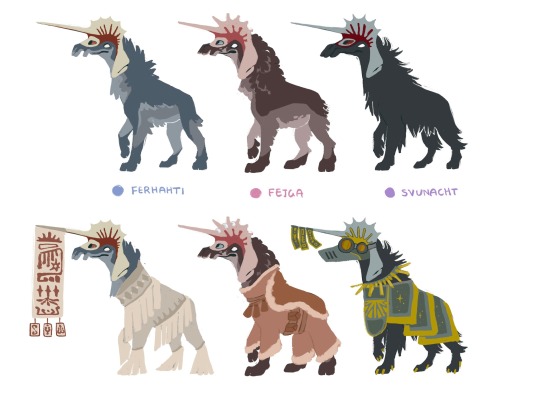
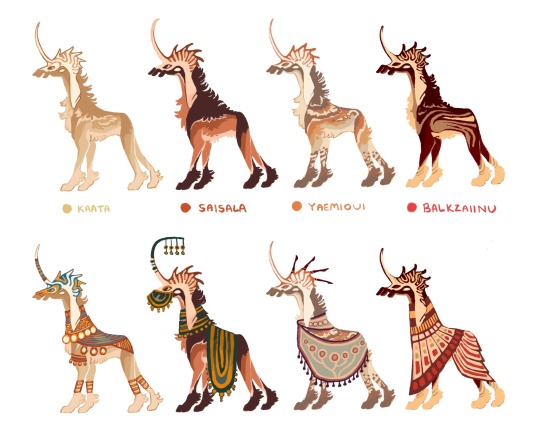
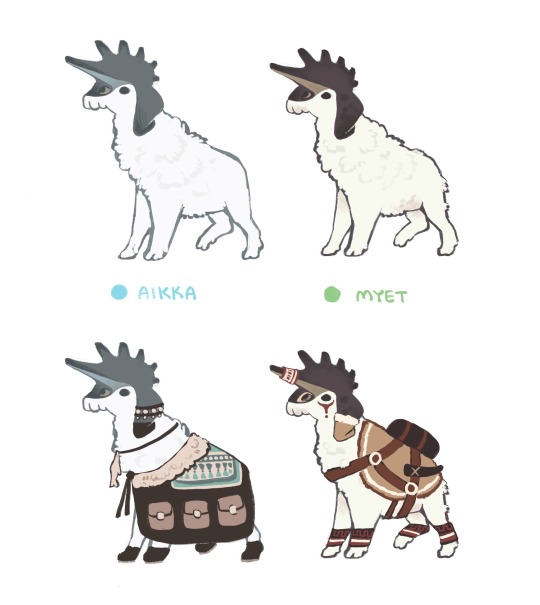
MAP OF ETTERA (Knight Homeplanet)

Standard map [continents shown]

Regional map [territories shown]
✦ ✦ ✦ ✦ ✦ ✦
I have here a weeks worth of writing and art because I for some reason enjoy torturing myself! I've been slaving away at this for so long but it's finally done and polished. So! As promised, I'm gonna talk a bit about the different Knight cultures/ethnicities, territories and general social structure.
Knights are one of my alien sophont civilisations from my Vivere 44 headworld. Here are more links from my previous posts:
Introductory post
Knight deities
Knight languages and names
With that being said, worldbuilding textwalls below the cut!
____
First, an explanation of the maps.
CONTINENTS
There are three main continents on Ettera. The two polar landmasses are Thannoeh in the northern end and Nahrui in the southern end. Thannoeh is divided by east and west, and is home to the two major Polar Knight nations. Nahrui is not occupied by any, aside from explorers or scientists. For many Knights, it is a strange, enigmatic land and a topic of great curiosity. In the middle is Val-srat; the central continent inhabited by Mountain and Plains Knights. The landmass is named as such because it is often represented in folklore as a Knight, with Valazear (the ‘Host’) being the southern Plains territories and Srati (the ‘Helmet’) being the northern Mountain territories. The Ihmna Stretch is the section of land connecting the two countries - ‘Ihmna’ is the Ferhahti word for the Integrator organ which joins the host and helmet’s consciousness.
Plant life on Ettera takes on hues of red and orange.
____
Before I get into the different ethnicities, I should elaborate more on how Knight Orders are structured and the different titles; some of the clothing articles are specific to status.
SOCIAL STRUCTURE
Most Knights live in groups called ‘Orders’, which I talked more about in this ask.
The standard roles for an Order are as follows:
Commander - Makes decisions, protects and supports the group. Commanders lead the Order across difficult terrain, plan out hunts, and take care of their members. A Commander might be chosen based on generational succession, experience, or strength. Depending on the rules of the Order, a Commander might be challenged by a Knight who desires their position, although only an elite or lieutenant would be permitted to do this. In more traditional and conservative orders Commanders are always Pike-forts.
Lieutenant - Second in command. The Lieutenant is the Commander’s primary advisor and runs the Order when they are unable to. A Commander may train their lieutenant to one day take their place as leader, or a lieutenant might serve multiple generations of Commanders without ever challenging them.
Elites - A selection of Knight soldiers who are exceptionally experienced, strong and fast. Highly respected by the rest of the Order and carry out important duties such as organisation. They have the highest chance of being the next lieutenant or Commander.
Soldiers - The main body of the Order, fully grown Knights who are proficient in all the skills necessary for survival. Soldiers are tasked with a variety of jobs to keep the Order healthy and running: they are also farmers, medics, entertainers, strategists, builders, etc.
Scouts - Scouts are Knights who make reconnaissance trips for the Order. Their job is to gather information about a potential area to settle or travel through. Scouts also have a range of other responsibilities, such as acting as lookouts, messengers, and taking care of Pages.
There are two types of Scouts - temporary and permanent. Temporary scouts are Squires (16-17 years) who have completed their training and are performing Expeditions, which they are required to do before becoming a full soldier. On Expeditions two or three Scouts will travel a certain distance away from the Order, sometimes miles away, to deliver goods to other Orders or to simply evaluate an area/route. Permanent scouts are lower-ranked Knights who are unable to become Soldiers, prefer a caretaker role, or have been relegated to the position.
Squires - Knights in training. Squires learn from a Soldier assigned to teach them. They may be tutored one-on-one, or taught in a group. They learn the ways of the Order and the world around them. Squires will often be assigned small hunting trips with their tutor, or cleaning jobs. Typically aged 7-15 years.
Pages - The youth of the Order, Knights aged 0-6 years. The pages are fiercely protected by every member of the Order. A newborn Helmet or Host will stay with their birth parent/s until they have assimilated, in which care duty is passed on to a permanent Scout. The Scout raises the Pages alongside several others until they are ready to become Squires.
This structure originated from Mountain Orders and spread to Plains and Polar regions a long time ago. Of course, not every Order follows this plan exactly, and there are countless variations. Some Knights don't live in Orders at all, and may live in pairs (which is common for travelling merchants and explorers) or small groups. Very rarely, a Knight may travel alone. This is the case for exiles.
____
You may already be familiar with the Mountain, Plains and Polar Knight regional varieties, but within these subspecies are various ethnic groups.
THE ETHNICITIES
✦ MOUNTAIN ✦
✦ Ferhahti [Ferhaht]
The Ferhahti Knights are an ethnic group located in the Ferhaht territory of Srati. Their thick fur is of various shades of grey and grey-blue. Their clothing styles are typically beige and tan, often complete with rectangular tassels and red accents. The Ferhahti have a ‘New Years’ festival called Khulaam in which they call upon Etteran spirits to bless them with good harvests, hunting and rain. During these festivals there is music, food, dancing and socialising with others. Allied Orders, usually 2-5, will come together to celebrate. Celebrations last five days. Alliances may be temporary or long-lasting, but the Orders will go on a hunt on the final day to bring down a large quarry. Oftentimes there will be a ‘Herald’ dancer who bears a flag on their horn, depicting glyphs of good fortune.
Since the Ferhahti and Kaata territories are neighbouring, and have no physical borders, Orders from both lands will often meet to trade goods and information. Many Plains-Mountain hybrids are of Ferhahti and Kaata descent due to the close proximity of the nations.
NOTE: Plains and Mountain Knights are capable of producing hybrid offspring, although they will be infertile. Neither Plains nor Mountain Knights can produce viable hybrids with Polar Knights.
✦ Fejga [Fejg]
Fejga Knights (pronounced Fej-ya) make their home in the Fejg archipelago. They are generally of a bulkier physique than other Mountain Knights, have a coat of thick fur and are well adjusted to chillier climates. They also sport a ‘saddle’ marking on their backs and are likely to have mottled/freckled patterns and blue eyes. Their Orders are partially seafaring, with many sailing from island to island in magnificent ships. Fishing is a large part of their lifestyles as the sea provides a stable source of food.
Their clothes are frequently made from leather and wool from domesticated animals. It is deceptively thin, as their pelts already provide natural insulation from the cold. Fejga Commanders wear three silver piercings on their Helmets.
✦ Svunacht [Svun]
Svunacht Knights live within the mountain-bordered territory of Svun and the island of Naahek. Orders have a special ceremony for choosing their Commander. The next in line, usually a chosen Host and Helmet born of the previous Commander and their partner, must journey across the Asall mountain range which borders Svun. It is a treacherous, long passage, and requires the Knight to wear a mask to block out the searing winds. They must also wear a spiked collar as a traditional accessory and safety measure to deter larger predators which roam the mountains. They are forbidden from carrying firearms, only armed with a knife, their wits, and natural defences. Ceremonial garments are required, passed down through generations, and three slips of fabric are worn on their horn for good luck: representing strength, wisdom and tenacity. The journey, called the Meha, is the final step in a long series of rigorous training for future successors.
The painting of Helmets is also a large part of Svunacht culture. It is typically only reserved for Commanders, Lieutenants or Elites.
★ PLAINS ★
★ Kaata [Kaat]
Kaata Knight Orders inhabit the deserts of Kaat. They are perfectly suited to desert life, their tan coats reducing heat absorbed from the sun. Kaata Knights make their clothing from woven fibres of plants that are garnished with gold pigments derived from a natural mineral found in the sands. They are especially known for their proficiency in fine crafts, and often trade jewellery to Ferhahti Orders across the Ihmna Stretch connecting Kaat and Ferhaht. Kaata clothing tends to be highly detailed and ornamental, with shiny beads adorning arm cuffs, necklaces, mandible rings and horn sleeves. The many gemstone and fossil deposits in Kaat are also incorporated into their styles. Like the Svunacht Knights, Kaata also paint their Helmets, although the practice is not restricted to any particular titles.
★ Saisala [Saisal]
Saisala Knights live in and around the deltas and rivers of Saisal, the southernmost territory of Val-srat. The area is filled with marshlands and everglades, and the weather is more wet and humid than the dry plains of Kaat. Saisala forts sport a dark reddish mane that grows right down their backs and bears some resemblance to maned wolves. Their pikes have hooked horns and sloping spines, as well as more ‘splotchy’ red stripes. Their Helmet eyes also have a pale ring around their pupils.
Saisala clothing styles are characterised by draping, ovular shapes and translucent sections of fabric. The green and gold drapes in the drawing are traditional wedding garments, complete with rounded tassels and a horn extension for pikes. The hanging ‘coins’ have engravings which tell a short but sweet poem.
★ Yaemioui [Yaemiou]
Yaemioui Orders live in a similar environment to Saisala Knights, in the wetland territories of Yaemiou. Their coats are pale like Kaata, but come in a greater combination of hues such as orange, grey and vermilion. Fun fact: all Plains Host pups are born with faint spots to help them camouflage, like lion cubs. Most lose these markings as they grow older, but Yaemioui hosts retain them even in adulthood. Their patterns are similar to painted dogs. The Yaemioui have a rich storytelling culture and have records dating back thousands of years.
Their clothing styles utilise dusky, non-bright colours that are usually two-piece. The outfit in the picture is worn by an elder Pike-fort who has carried and sired many offspring. The spine extensions are an indicator of age and experience, and a mark of high respect. The scarf around their neck depicts circles symbolising their Helmet children, and the circles on the larger cloth represent their Host progeny.
★ Balkzaiinu [Balkzaii]
On the island of Balkzaii reside the Balkzaiinu Knights, who have dark stripes on both their Hosts and Helmets and short curly fur. Unlike other Orders, Balkzaiinu communities rarely ever hunt - they were one of the first countries to develop farming and agriculture, and import a lot of domesticated animals to Saisal and Yaemiou. They are also the only country that has no Commanders in their Orders, and decisions are made by a council of higher-ups. They live in a tropical climate which receives lots of rainfall and cyclones. They are also masters in boat making and sailing, and contacted the mainland several centuries ago. Balkzaiinu have different decency standards than other Plains Knights, and in their culture it is considered proper to cover the neck area. Their clothing is generally layered and contains colourful, square designs.
✧ POLAR ✧
✧ Aikka [Ehtte Thannoeh]
Aikka Knights have domain over the Eastern section of Thannoeh. The polar word for East is Ehtte, and West Uesse. Since the country is so close to the Fegj archipelago, the two have been in contact for a long time.
Aikka have pristine white fur and a slightly bluish tinge to their Helmets. As with all Polar Knights, they are much smaller than their Plains or Mountain relatives, but are incredibly tough and hardy as a result of surviving in one of the harshest biomes. Ehtte Thannoeh is associated with scientific prowess, discovery and knowledge, and many famous Knight explorers are from Thannoeh. There are several research stations on Nahrui that are run and managed by Aikka; they have no difficulty working in the icy environment. Aikka Knights are also experts in carving, sculpting figurines and charms from the ivory tusks of marine animals. The outfit depicted in the drawing shows an Aikka Scout wearing a pendant with a carved basilosaurus-like animal for spiritual protection. These pendants are often given by parents to children. Their coat has six pockets for navigational instruments, goggles, knives, a spyglass, medical equipment and more.
✧ Myet [Uesse Thannoeh]
Myet Orders have less contact with other regions than Aikka. Residing in Uesse Thannoeh, Many of them live further inland. Myet Hosts have a more yellowish tinge to their fur and their Pike Helmets have a tan stripe. The Helmets also have a more rounded 'snout'. They have managed to domesticate a large predator which defends their camps and is used as a mount/companion. Like the Balkzaiinu, Myet Orders have a different structure than most, having two Commanders, usually a mated pair, and no lieutenants or elites.
Myet clothing is more minimal than Aikka styles. They usually cover the back with a ‘saddle’ and manipulators with gloves. The outfit drawn is of a Commander, distinguished by the ring of fabric around their horn and eye makeup. In their backpack they carry hunting weapons, and wear a knife sheathed at their side.
_________________
And that's a wrap! Thank you for reading, this project is truly a delight to work on. I leave you with some messy concept art I did a while ago for Mountain Knight clothing styles.

#read my lore boy#i got some asks about people wanting to make knight ocs which inspired me to finish this haha#vivere 44#speculative biology#spec bio#spec evo#speculative evolution#worldbuilding#writing#my art#art#illustration#artists on tumblr#knights#xenobiology#is this enough tags
946 notes
·
View notes